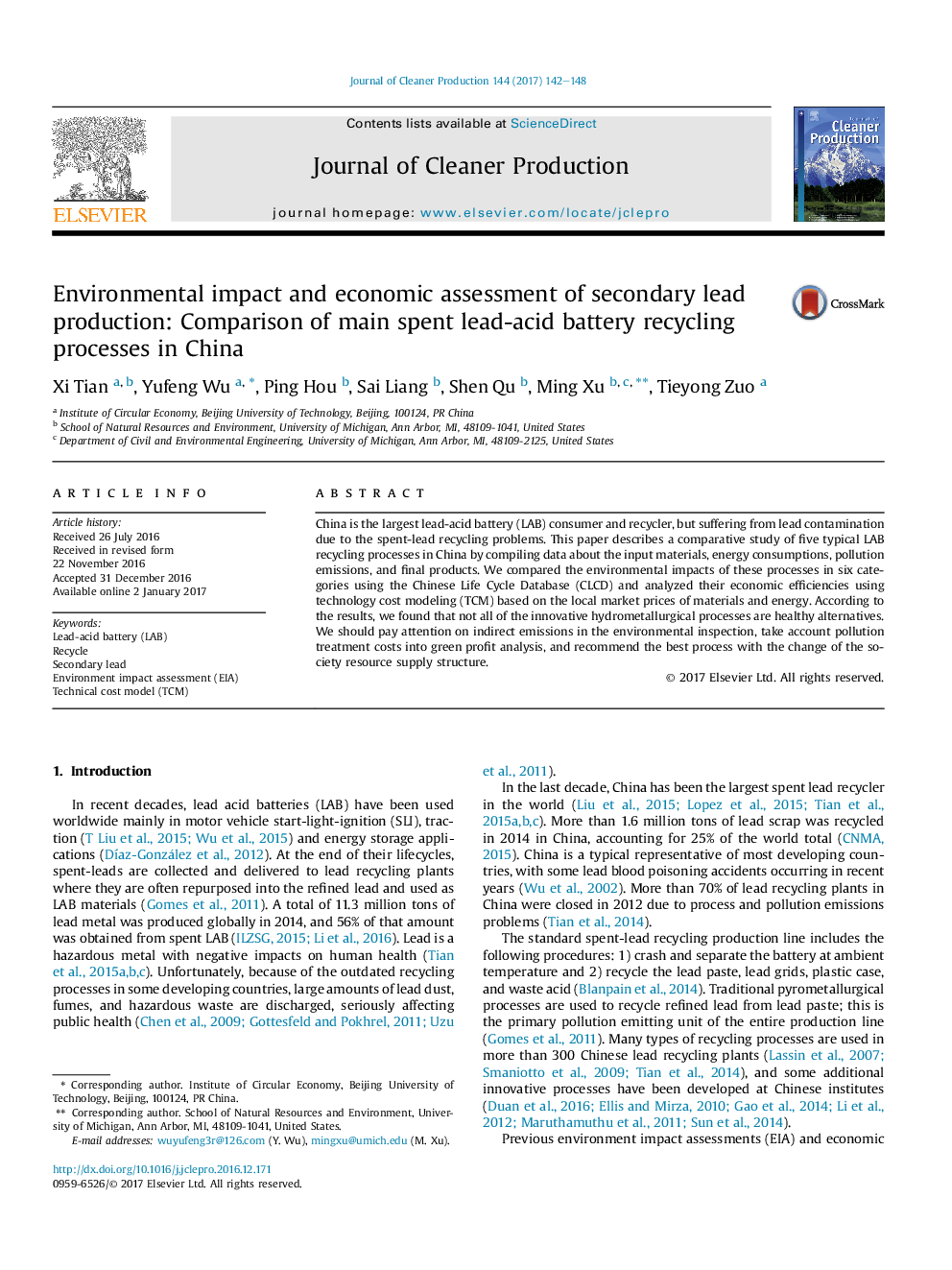| Article ID | Journal | Published Year | Pages | File Type |
|---|---|---|---|---|
| 5480271 | Journal of Cleaner Production | 2017 | 7 Pages |
Abstract
China is the largest lead-acid battery (LAB) consumer and recycler, but suffering from lead contamination due to the spent-lead recycling problems. This paper describes a comparative study of five typical LAB recycling processes in China by compiling data about the input materials, energy consumptions, pollution emissions, and final products. We compared the environmental impacts of these processes in six categories using the Chinese Life Cycle Database (CLCD) and analyzed their economic efficiencies using technology cost modeling (TCM) based on the local market prices of materials and energy. According to the results, we found that not all of the innovative hydrometallurgical processes are healthy alternatives. We should pay attention on indirect emissions in the environmental inspection, take account pollution treatment costs into green profit analysis, and recommend the best process with the change of the society resource supply structure.
Keywords
Related Topics
Physical Sciences and Engineering
Energy
Renewable Energy, Sustainability and the Environment
Authors
Xi Tian, Yufeng Wu, Ping Hou, Sai Liang, Shen Qu, Ming Xu, Tieyong Zuo,
